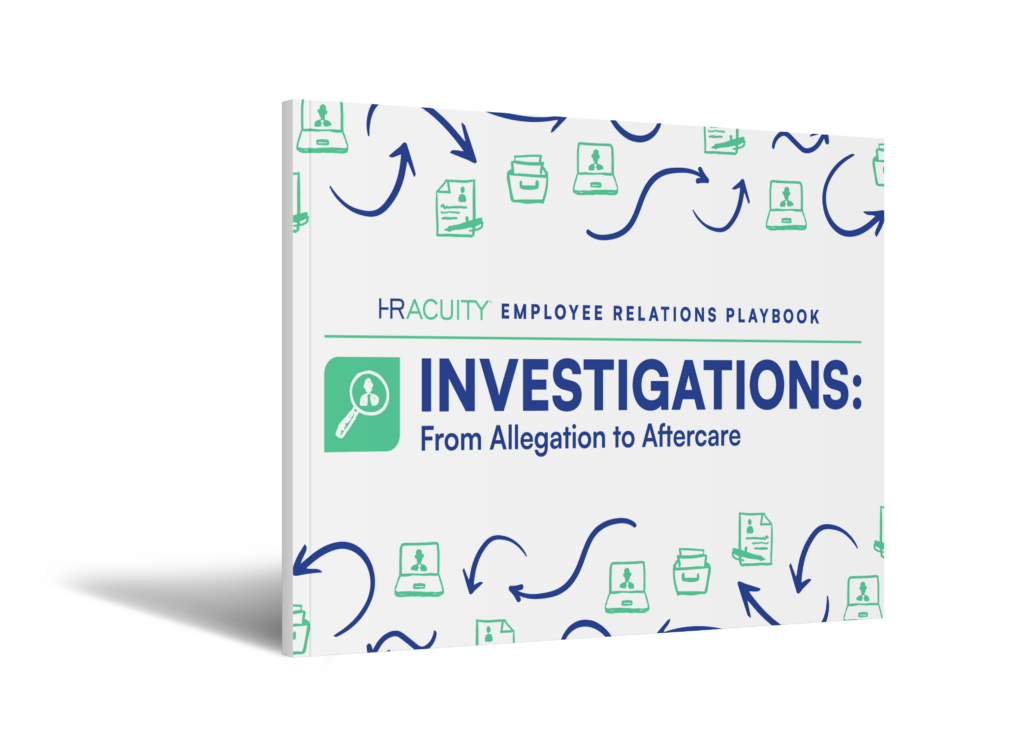The workplace, whether remote or in-person, can be a humming hive of productivity. With many employees handling various workloads and duties, it’s important that each person understands how to behave appropriately in different situations. In addition to setting a code of conduct, performance standards can be implemented to guide employees. Of course, it’s a dream to have a workplace without any incidents of risk, misconduct or lapse in performance, even minor ones – there is no such thing as the “perfect” team. This is why having appropriate corrective action measures will lessen the impact such incidents can have and possibly even prevent them from occurring.
The purpose of corrective action
Corrective action is a term used when any work-related activities are undertaken to improve performance or to reduce the risk of harm in the workplace. This can include a range of things, such as employee training, disciplinary action and safety inspections. These actions can be part of a larger strategy or they may be standalone actions that have been developed in response to an incident.
Corrective action can also be taken by employees themselves if they’re dissatisfied with their working conditions or if they feel unsafe at work. In these cases, employees might file a complaint with their employer and request a change in their work situation. Sometimes this is called “self-corrective action.”
The underlying purpose of the corrective action itself is to prevent future incidents from occurring. Some people argue that it’s more important to focus on preventing harm than it is to focus on correcting past mistakes. However, some view corrective action as a necessary step in the process of learning from missteps and improving for the future. Nevertheless, it’s important for any organization to have an action plan in place that both proactively and reactively deals with appropriate corrective action in the workplace.
Creating a corrective action plan
Does your organization already have a corrective action plan set in place? When was the last time it was reviewed and updated? Not only should your corrective action plan be updated every time a new solution has been implemented, but it should also be reviewed periodically to ensure it’s an accurate reflection of and remains relevant to the organization.
A corrective action plan is a document that outlines the steps to be taken when correcting an issue. Of course – and hopefully – each instance will be unique and non-repetitive, your human resources (HR) and employee relations (ER) team can draft a template to serve as a starting point for most cases. Corrective action plans are a way to document the status of a corrective action, as well as describe the measures for completing it. In many cases, this plan is created by human resources management and signed off by the affected employee(s). A common template for a corrective action plan includes the following elements:
Purpose: This section should explain why you’re taking action. You can also include a description of what happened or why this is important, as well as the relevant policy that applies.
Action Items: Here, you’ll list each action you’ll need to take in order to complete the corrective action. There are several ways you can structure this section. For example, you could note each step on a worksheet and check off each item as you finish it. Or, you could record each step and put them in chronological order depending on how long it will take you to complete each one.
Timeline: This section shows when each step will be completed. You can include deadlines if there’s a specific time limit for completing the tasks. If you have multiple people working on these tasks, include their names and roles as well.
A corrective action plan is an important tool for quality management. The process of creating one doesn’t need to be complicated or arduous, but it’s important to have a plan in place to identify and fix any issues that may arise, for the health of your organization.
Download the Employee Relations Playbook
Everything you need to know from
Allegation to Aftercare.

Examples of corrective action
There are multiple examples of corrective action that need to be resolved in their own way. Here are some corrective action examples in the workplace and how you as human resources or employee relations professionals can resolve similar matters in your organization.
Performance-based corrective action
It can be stressful for ER managers to speak with employees about how to improve their performance, but you can alleviate this anxiety by approaching staff casually and on a personal level. The most important thing that managers can do to help their employees is to point them in the right direction by providing constructive criticism and support. This will help them improve their skills, which, in turn, will lead to better performance and a higher level of engagement.
It’s vital for managers and employees to have a healthy relationship. When both parties are open with each other, it allows them to discuss any issues that might arise and come up with solutions together. Feedback should be given in a timely manner so that the employee can take action as soon as possible. It’s also meaningful that feedback is constructive instead of destructive so that the employee can learn from their mistakes instead of feeling defeated. You can also offer resources and learning opportunities to help them grow in their positions and within the organization.
Employee behavior
The stress from a workload, differences of opinion and even trouble at home can all lead an employee to conduct themselves in less than ideal ways. Not only can hostile behavior lead to dissonance in the workplace, but it can impact the overall performance and productivity of the organization and escalate into a serious problem. Negative attitudes are extremely hard to deal with because they generally stem from deep-seated issues that need addressing.
To handle a negative or poorly behaved employee, stay calm and professional at all times. If you react too quickly or lose your cool, it will only reinforce their undesirable behavior, making it more likely that they will continue the behavior in the future. Instead, take things one step at a time and focus on the task at hand. In time, this approach will prove more successful than reacting defensively or emotionally.
For many behavioral incidents that happen in the workplace, immediate corrective action needs to be taken in response to non conformity (failure to comply with a standard expectation of behavior) or potential nonconformance to prevent it from occurring again. It’s typically a short-term fix that’s put in place until a more permanent solution can be implemented.
Employee misconduct
Having a code of conduct isn’t going to prevent instances of insubordination from happening in your organization. For those intentionally violating the code, such as by committing fraud, a piece of paper telling them not to do that isn’t enough to deter them. Having an understanding of the consequences and corrective action that will be taken will have a greater impact, especially if the misconduct is small, such as excessive absences.
The corrective action for employee misconduct in the workplace can vary depending on its nature and severity. There should be a clear outline of corrective action for specific acts of wrongdoing, such as no-warning dismissals for extreme misconduct or tier-based consequences based on the number of minor occurrences. For instance, if an employee has made one mistake, they may be given a warning or suspension; if they have made two mistakes, they may be put on probation; and if they have made three or more mistakes, then their employment will be terminated.
Business process inefficiencies
The distance between point A and point B – as in, the length of time it may take to complete a business operation – may be longer than managers think, and could be impacting output and productivity in the workplace. Your organization’s management team should be identifying and correcting inefficiencies in all business processes to increase efficiency, effectiveness and predictability.
It’s important to know that there are many reasons why a business process can be inefficient: It can be because of a lack of communication between departments, procedures might not be defined well enough or there may be too many people involved in the operation. The list goes on.
The only course of action is to review how each department completes specific tasks, how well they work together and whether there is a centralized system set in place to prevent silos and promote consistency. Continue to research new and innovative ways of conducting business and pinpoint whether a digital transformation could resolve weaknesses in your organizational operations. Offering continuous training and improvement resources to employees will ensure they adapt quickly and easily to changes in the workplace and don’t fall back into their old habits.
Safety issues
Safety is one of the most important things to consider when working in any environment. However, certain industries are more prone to safety issues than others. For example, construction sites and mines are notorious for accidents and injuries. It’s important for employers to take steps to prevent safety problems before they occur and have a suitable corrective action plan for when they do happen.
The implementation of corrective actions isn’t enough to ensure the safety of employees. It’s also important to have a system in place that can monitor the ongoing situation and make sure that corrective actions are still effective.
The Occupational Safety and Health Administration (OSHA) has multiple laws and regulations that all workplaces in the US must follow. Many have to do with exit routes and emergency planning, occupational noise exposure and medical and first aid. These should be a starting point for proactively preventing safety issues. Mistakes and emergencies do happen — When it’s become obvious that corrective action needs to be taken to promote a safer work environment, it’s important to respond quickly and find and resolve the problem promptly.
Finding the cause of the problem
The goal of corrective action is to eliminate the root cause of the problem and prevent it from recurring, but it’s not as uncomplicated as that. Finding that underlying issue can be difficult for HR and ER managers to pinpoint.
A lack of workplace communication is the number one cause of workplace issues. When employees don’t talk to each other, misunderstandings can occur. And when these misinterpretations happen, they can lead to conflict and poor morale. One way to prevent this is by supporting – and even scheduling – open conversations among employees and between employees and management. This can take many different forms: casually talking with your employees about what they like and don’t like in their work environment, encouraging employees to share problems that are happening at work and asking for routine formal feedback. By making sure that you have open discussions with each other, you’ll be able to avoid conflicts and foster positive relationships within your team.
Consider the shortest path to workplace resolution
In many cases, the shortest path to correcting a problem is to identify it and then fix it. For example, if an employee is leaving work early, you would usually try to find out why. If they have a good reason, like they have to pick their child up from school, then you might need to offer more flexible work hours. If the resolution is a straightforward one, such as changing the work environment, then the corrective action is also simple. However, if you’ve provided solutions and the incident continues occurring or if you can’t find a simple solution, then you may need to investigate further: examine the situation more deeply and look for other possible causes (perhaps there’s some kind of management issue that needs addressing). By taking this proactive approach and identifying the root cause of the problem, you will be able to prevent future problems and reduce your overall risk of liability.
See HR Acuity's Solutions in Action
Discover why HR Acuity is the preferred employee relations management software.
Optimize human resources software to effectively manage and implement your corrective action plan
There’s no question that HR software can be a valuable tool for providing a clear picture of your organization’s employee health. It can also be an important part of your organizational corrective action plan.
A well-designed HR system can help you keep track of your organization’s current state and its employees so that you know when things are going well and when issues need to be addressed. Further, it’s able to assist you in identifying where to focus your efforts as you try to improve your workplace culture and retain top talent.
While there are many different types of HR software, they all share one common goal: to help an organization optimize its operations. That means that they should all have similar features, including reporting capabilities, employee relations tools and self-service portals. These devices will also include automated means for conducting employee surveys, collecting data on performance reviews and other tasks that are crucial to managing your corrective action plan.
As part of your organization’s complete employee relations strategy, HR Acuity can provide you with customized software that streamlines your ER management. We offer intuitive dashboards and a library of best practices designed to help business leaders effectively manage employee issues and investigations in the workplace. But that’s not all: HR Acuity can deliver a 520% ROI to your organization! We’ll show you how.
Request your free demo of any of our software programs and get the discussion started.



